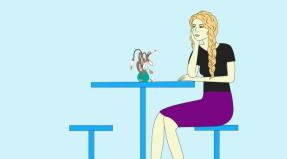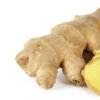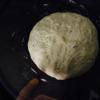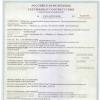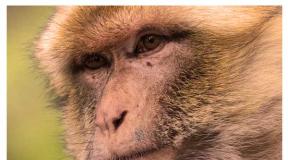Classification of geometric models by internal representation. Types of geometric models, their properties, parametrization of models. Geometric modeling systems
Among the variety of models used in science and technology, the most widely used are mathematical models. Mathematical models are usually understood as various mathematical constructions built on the basis of modern computer technology that describe and reproduce the relationship between the parameters of the modeled object. To establish a connection between number and form, there are various ways of spatial-numerical coding. The simplicity and accessibility of solving practical problems depends on a well-chosen reference system. Geometric models are classified into subject (drawings, maps, photographs, layouts, television images, etc.), computational and cognitive. Object models are closely related to visual observation. The information obtained from object models includes information about the shape and size of the object, about its location relative to others. Drawings of machines, technical devices and their parts are performed in compliance with a number of symbols, special rules and a certain scale. Drawings can be assembly, general view , assembly, tabular, overall, external views, operational, etc. Depending on the design stage, the drawings are divided into technical proposal drawings, draft and technical designs, working drawings. Drawings are also distinguished by industry: machine-building, instrument-making, construction, mining and geological, topographic, etc. Drawings of the earth's surface are called maps. Drawings are distinguished by the method of images: orthogonal drawing, axonometry, perspective, projections with numerical marks, affine projections, stereographic projections, kineperspective, etc. Geometric models differ significantly in the way they are made: original drawings, originals, copies, drawings, paintings, photographs, films, radiographs, cardiograms, layouts, models, sculptures, etc. Among the geometric models, flat and three-dimensional models can be distinguished. Graphical constructions can serve to obtain numerical solutions of various problems. When calculating algebraic expressions, numbers are represented by directed segments. To find the difference or sum of numbers, the segments corresponding to them are plotted on a straight line. Multiplication and division is carried out by constructing proportional segments, which are cut off on the sides of the angle by straight parallel lines. The combination of multiplication and addition operations allows you to calculate sums of products and a weighted average. Graphical exponentiation consists in successive repetition of multiplication. The graphical solution of the equations is the value of the abscissa of the point of intersection of the curves. Graphically, you can calculate a definite integral, build a graph of the derivative, i.e. differentiate and integrate, and solve equations. Geometric models for graphical calculations must be distinguished from nomograms and computational geometric models (RGMs). Graphical calculations require a sequence of constructions each time. Nomograms and RGMs are geometric images of functional dependencies and do not require new constructions to find the numerical values. Nomograms and RGMs are used for calculations and studies of functional dependencies. Calculations on RGM and nomograms are replaced by reading answers using elementary operations indicated in the nomogram key. The main elements of nomograms are scales and binary fields. Nomograms are subdivided into elementary and compound nomograms. Nomograms are also distinguished by the operation in the key. The fundamental difference between the RGM and the nomogram is that geometric methods are used to construct the RGM, and analytical methods are used to construct the nomograms.
Geometric models depicting relationships between elements of a set are called graphs. Graphs are models of order and mode of action. On these models there are no distances, angles, the connection of points of a straight line or a curve is indifferent. In graphs, only vertices, edges, and arcs are distinguished. For the first time, graphs were used in the course of solving puzzles. Currently, graphs are effectively used in planning and control theory, scheduling theory, sociology, biology, in solving probabilistic and combinatorial problems, etc. The graphical model of dependency is called a graph. Function graphs can be built from a given part of it or from a graph of another function using geometric transformations. A graphic image that clearly shows the ratio of any quantities is a diagram. For example, a state diagram (phase diagram) graphically depicts the relationship between the state parameters of a thermodynamically equilibrium system. A bar chart, which is a collection of adjacent rectangles built on the same straight line and representing the distribution of any values according to a quantitative attribute, is called a histogram.
Of particular interest is the use of geometry to assess the theoretical and practical significance of mathematical reasoning and analyze the essence of mathematical formalism. Note that the generally accepted means of transferring acquired experience, knowledge and perception (speech, writing, painting, etc.) are a deliberately homomorphic projection model of reality. The concepts of projection schematism and design operations are related to descriptive geometry and have their generalization in the theory of geometric modeling. real phenomena of nature and social relations allow various descriptions, differing from each other in the degree of reliability and perfection. The basis of scientific research and the source of any scientific theory is observation and experiment, which always aims to reveal some regularity. Starting to study any particular phenomenon, a specialist, first of all, collects facts, i.e. notes such situations that are amenable to experimental observation and registration with the help of the senses or special instruments. Experimental observation is always projective in nature, since the set of facts that are indistinguishable in a given situation (belonging to one projecting image) is assigned the same name (projection). The space related to the phenomenon under study is called operational, and the space related to the observer is called picture space. The dimension of the picture space is determined by the possibilities and means of observation, i.e. voluntarily or involuntarily, consciously and completely spontaneously, it is set by the experimenter, but it is always less than the dimension of the original space to which the objects under study belong, due to various connections, parameters, and reasons. The dimension of the original space very often remains unidentified, because there are unidentified parameters that affect the object under study, but are not known to the researcher or cannot be taken into account. The projection nature of any experimental observation is explained, first of all, by the impossibility of repeating events in time; this is one of the regularly occurring and uncontrollable parameters, independent of the will of the experimenter. In some cases, this parameter turns out to be insignificant, and in other cases it plays a very important role. This shows how great and fundamental importance geometric methods and analogies have in the construction, evaluation or verification of scientific theories. Indeed, every scientific theory is based on experimental observations, and the results of these observations are - as said - a projection of the object under study. In this case, the real process can be described by several different models. From the point of view of geometry, this corresponds to the choice of a different design apparatus. He distinguishes objects according to some characteristics and does not distinguish them according to others. One of the most important and relevant tasks is to identify the conditions under which the determinism of the model obtained as a result of an experiment or research is preserved or, conversely, decays, since it is almost always important to know how effective and suitable a given homomorphic model is. The solution of the tasks set by geometric means turned out to be appropriate and natural in connection with the use of the above projection views. All these circumstances formed the basis for the use of analogies between various types projection geometric models obtained by homomorphic modeling, and models resulting from the study. The perfect model corresponds to regularities that establish a one-to-one or many-valued, but, in any case, quite definite correspondence between some initial and desired parameters that describe the phenomenon under study. In this case, the effect of schematization operates, a deliberate reduction in the dimension of the picture space, i.e. refusal to take into account a number of significant parameters that allow saving money and avoiding errors. The researcher constantly deals with such cases when intuitively irregular phenomena differ from regular phenomena, where there is some connection between the parameters characterizing the process under study, but the mechanism of action of this regularity is not yet known, for which an experiment is subsequently set up. In geometry, this fact corresponds to the difference between a broken model and a perfect model with an implicitly expressed algorithm. The task of the researcher in the latter case is to identify the algorithm in the projection, the input elements and the output elements. The pattern obtained as a result of processing and analyzing a certain sample of experimental data may turn out to be unreliable due to an incorrectly made sample of the acting factors subjected to the study, since it turns out to be only a degenerate version of a more general and more complex pattern. Hence the need for repeated or full-scale tests arises. In geometric modeling, this fact - obtaining an incorrect result - corresponds to the distribution of the algorithm for some subspace of input elements, to all input elements (ie, the instability of the algorithm).
The simplest real object, which is convenient to describe and model using geometric representations, is the totality of all observable physical bodies, things and objects. This set fills the physical space, which can be considered as the original object to be studied, the geometric space - as its mathematical model. Physical connections and relations between real objects are replaced by positional and metric relations of geometric images. Description of the conditions of a real problem in geometric terms is a very important and most difficult step in solving a problem, requiring a complex chain of inferences and a high level of abstraction, as a result of which a real event is clothed in a simple geometric construction. Theoretical geometric models are of particular importance. In analytic geometry, geometric images are studied by means of algebra based on the method of coordinates. In projective geometry, projective transformations and immutable properties of figures independent of them are studied. In descriptive geometry, spatial figures and methods for solving spatial problems are studied by constructing their images on a plane. The properties of plane figures are considered in planimetry, and the properties of spatial figures - in stereometry. In spherical trigonometry, relationships between angles and sides of spherical triangles are studied. The theory of photogrammetry and stereo photogrammetry makes it possible to determine the shapes, sizes, and positions of objects from their photographic images in military affairs, space research, geodesy, and cartography. Modern topology studies the continuous properties of figures and their mutual arrangement. Fractal geometry (introduced into science in 1975 by B. Mandelbrot), which studies the general patterns of processes and structures in nature, has become one of the most fruitful and beautiful discoveries in mathematics thanks to modern computer technology. Fractals would be even more popular if they were based on achievements modern theory descriptive geometry.
When solving many problems of descriptive geometry, it becomes necessary to transform images obtained on projection planes. Collinear transformations on the plane: homology and affine correspondence are essential in the theory of descriptive geometry. Since any point on the projection plane is an element of the model of a point in space, it is appropriate to assume that any transformation on the plane is generated by a transformation in space and, conversely, a transformation in space causes a transformation on the plane. All transformations performed in space and on the model are carried out in order to simplify the solution of problems. As a rule, such simplifications are associated with geometric images of a particular position and, therefore, the essence of transformations, in most cases, is reduced to the transformation of images general position to private.
The flat model of three-dimensional space constructed by the method of two images quite unambiguously or, as they say, isomorphically compares the elements of three-dimensional space with their model. This allows us to solve almost any problem that may arise in space on the planes. But sometimes, for some practical reasons, it is advisable to supplement such a model with a third image of the modeling object. The theoretical basis for obtaining an additional projection is the geometric algorithm proposed by the German scientist Gauk.
The problems of classical descriptive geometry can be conditionally divided into positional, metric and constructive problems. Tasks related to the identification of the mutual position of geometric images relative to each other are called positional. In space, straight lines and planes may or may not intersect. Open positional problems in the original space, when no constructions are required except for specifying intersecting images, become closed on a flat model, since the algorithms for solving them fall apart due to the impossibility of extracting geometric images. In space, a straight line and a plane always intersect at a proper or improper point (a straight line is parallel to a plane). On the model, the plane is defined by homology. On the Monge diagram, the plane is given by a related correspondence, and to solve the problem, it is necessary to implement an algorithm for constructing the corresponding elements in a given transformation. The solution of the problem of the intersection of two planes is reduced to the definition of a line that is equally transformed in two given related correspondences. Positional problems for the intersection of geometric images occupying a projecting position are greatly simplified due to the degeneracy of their projections and therefore play a special role. As you know, one projection of the projecting image has a collective property, all points of a straight line degenerate into one point, and all points and lines of the plane degenerate into one straight line, so the positional intersection problem is reduced to determining the missing projection of the desired point or line. Given the simplicity of solving positional problems for the intersection of geometric images, when at least one of them occupies a projecting position, it is possible to solve general positional problems using drawing transformation methods to transform one of the images into a projecting position. There is a fact: different spatial algorithms on the plane are modeled by the same algorithm. This can be explained by the fact that there are an order of magnitude more algorithms in space than on a plane. To solve positional problems, we use various methods: method of spheres, method of cutting planes, drawing transformations. The projection operation can be viewed as a way of creating and defining surfaces.
Exists big circle tasks related to measuring the lengths of segments, angles, areas of figures, etc. As a rule, these characteristics are expressed by a number (two points determine the number characterizing the distance between them; two straight lines determine the number characterizing the magnitude of the angle formed by them, etc. .), for the definition of which various standards or scales are used. An example of such standards are the usual ruler and protractor. In order to determine the length of a segment, it is necessary to compare it with a standard, for example, a ruler. And how to attach a ruler to a straight line of general position in the drawing? The scale of the ruler in the projections will be distorted, and for each position of the line there will be its own scale of distortion. To solve metric problems in the drawing, it is necessary to set the reference elements (improper plane, absolute polarity, scale segment), using which you can build any scale. To solve metric problems on the Monge diagram, drawing transformations are used so that the desired images are not distorted in at least one projection. Thus, under metric problems we will understand the transformation of segments, angles and flat figures into positions when they are depicted in full size. In this case, various methods can be used. Exists general scheme solving basic metric problems for measuring distances and angles. Of greatest interest are constructive problems, the solution of which is based on the theory of solving positional and metric problems. Constructive tasks are understood as tasks related to the construction of geometric images that meet certain theorems of descriptive geometry.
In technical disciplines, static geometric models are used that help form ideas about certain objects, their design features, and about their constituent elements, and dynamic or functional geometric models that allow demonstrating kinematics, functional relationships, or technical and technological processes. Very often, geometric models make it possible to trace the course of such phenomena that are not amenable to ordinary observation and can be represented on the basis of existing knowledge. Images allow not only to present the device of certain machines, devices and equipment, but at the same time to characterize their technological features and functional parameters.
Drawings provide not only geometric information about the shape of the parts of the assembly. According to it, the principle of operation of the unit is understood, the movement of parts relative to each other, the transformation of movements, the occurrence of forces, stresses, the conversion of energy into mechanical work, etc. In a technical university, drawings and diagrams take place in all studied general technical and special disciplines (theoretical mechanics, strength of materials, structural materials, electromechanics, hydraulics, engineering technology, machine tools and tools, theory of machines and mechanisms, machine parts, machinery and equipment, etc.). ). To convey various information, the drawings are supplemented with various signs and symbols, and for their verbal description, new concepts are used, the formation of which is based on the fundamental concepts of physics, chemistry and mathematics. In the process of studying theoretical mechanics and strength of materials, qualitatively new types of visualization appear: a schematic view of a structure, a design scheme, and a diagram. A diagram is a type of graph that shows the magnitude and sign of various internal force factors acting at any point in the structure (longitudinal and transverse forces, torsional and bending moments, stresses, etc.). In the course of strength of materials, in the process of solving any computational problem, repeated recoding of data is required by using images that differ in their functions and levels of abstraction. A schematic view, as the first abstraction from the real structure, allows us to formulate the problem, highlight its conditions and requirements. The calculation scheme conditionally conveys the design features, its geometric characteristics and metric ratios, the spatial position and direction of the acting force factors and support reactions, points of characteristic sections. On its basis, a model for solving the problem is created, and it serves as a visual support in the process of implementing the strategy at different stages of the solution (when plotting moments, stresses, twist angles, and other factors). In the future, when studying technical disciplines, the structure of the used geometric images becomes more complicated with the widespread use of conventional graphic images, iconic models and their various combinations. Thus, geometric models become an integrating element of natural and technical academic disciplines, as well as methods of professional activity of future specialists. The formation of an engineer's professional culture is based on a graphic culture that allows different types of activities to be combined within one professional community. The level of training of a specialist is determined by how developed and mobile his spatial thinking is, since an invariant function of the intellectual activity of an engineer is the operation of figurative graphic, schematic and symbolic models of objects.
Similar information.
Introduction to 3D Modeling
Modern 3D - design systems allow you to create three-dimensional models of the most complex parts and assemblies. Using visual methods for the formation of three-dimensional elements, the designer operates with simple and natural concepts of base, hole, chamfer, stiffener, shell, etc. At the same time, the design process can reproduce the technological process of manufacturing a part. After creating a 3D model of a product, the designer can obtain its drawing without the routine creation of views using flat drawing tools.
Geometric patterns
When solving most problems in the field of computer-aided design and technological preparation of production, it is necessary to take into account the shape of the designed product. It follows from this that geometric modeling, understood as the process of reproducing spatial images of products and studying the characteristics of products using these images, is the core of computer-aided design. Information about the geometric characteristics of an object is used not only to obtain a graphic image, but also to calculate various characteristics of products, technological parameters of its manufacture, etc. In fig. 1. shows what tasks are solved using a geometric model in a computer-aided design system (CAD). Geometric models are understood as models containing information about the shape and geometry of the product, technological, functional and auxiliary information.
Rice. 1. Problems solved using a geometric model
The development of methods and tools for geometric modeling has determined the change in the orientation of CAD graphics subsystems. In CAD, two types of construction of graphic subsystems can be distinguished:
1. Drawing oriented.
2. Object oriented.
First-generation drawing-oriented systems provide the necessary conditions for the creation of design documentation. In such systems, not an object (detail, assembly) is created, but a graphic document.
The evolution of CAD graphics subsystems has led to the fact that drawing-oriented systems are gradually losing their importance (especially in the field of mechanical engineering) and object-oriented systems are becoming more common. On fig. 2 shows the evolution of the orientation of CAD graphics subsystems over the past decades.
Rice. 2. The core of the CAD graphics subsystem:
a - drawing; b - drawing data; c - three-dimensional geometric model
At the initial stages of development and implementation of CAD, the main document for the exchange between various subsystems was a drawing (Fig. 2a). The next generation of graphic subsystems used drawing data as the data through which the exchange with the functional CAD subsystems was ensured (Fig. 2b). This made it possible to switch to paperless design technology. In graphic subsystems integrated with CAD, the core is three-dimensional geometric models of designed products (Fig. 2c). In this case, various two-dimensional images of a three-dimensional model are formed automatically in such subsystems.
Geometric Modeling
Vector and raster graphics.
There are two types of graphics - vector and raster. The main difference is in the principle of image storage. Vector graphics describes an image using mathematical formulas. The main advantage of vector graphics is that when you change the scale of the image, it does not lose its quality. Another advantage follows from this - when resizing the image, the file size does not change. Raster graphics is a rectangular matrix consisting of many very small indivisible dots (pixels).
A raster image can be compared to a children's mosaic, when the picture is made up of colored squares. The computer remembers the colors of all the squares in a row in a certain order. Therefore, bitmap images require more memory to store. They are hard to scale and even harder to edit. To enlarge the image, you have to increase the size of the squares, and then the picture turns out to be "stepped". To reduce a raster image, several neighboring points must be converted into one or extra points should be discarded. As a result, the image is distorted, its fine details become illegible. These shortcomings are devoid of vector graphics. In vector editors, a drawing is stored as a set geometric shapes- contours presented in the form of mathematical formulas. To enlarge an object proportionally, all you need to do is change one number: the scaling factor. There are no distortions either when increasing or decreasing the picture. Therefore, when creating a drawing, you do not have to think about its final dimensions - you can always change them.
Geometric transformations
Vector graphics is the use of geometric primitives such as points, lines, splines, and polygons to represent images in computer graphics. Consider, for example, a circle of radius r. List of information required for complete description circles is:
radius r;
circle center coordinates;
color and thickness of the outline (possibly transparent);
fill color (possibly transparent).
Advantages of this way of describing graphics over raster graphics:
The minimum amount of information is transferred to a much smaller file size (the size does not depend on the size of the object).
Accordingly, you can infinitely increase, for example, the arc of a circle, and it will remain smooth. On the other hand, if the curve is represented as a broken line, magnification will show that it is not really a curve.
When objects are enlarged or reduced, the thickness of the lines can be constant.
Object parameters are stored and can be changed. This means that moving, scaling, rotating, filling, etc. will not degrade the quality of the drawing. Moreover, it is common to specify sizes in device-independent units ((English)), which lead to the best possible rasterization on raster devices.
Vector graphics have two fundamental drawbacks.
Not every object can be easily drawn in vector form. In addition, the amount of memory and time to display depends on the number of objects and their complexity.
Converting vector graphics to raster is quite simple. But way back, usually not - raster tracing usually does not provide high quality vector art.
Vector graphics editors typically allow you to rotate, move, reflect, stretch, bevel, perform basic affine transformations on objects, change z-order, and combine primitives into more complex objects.
More sophisticated transformations include boolean operations on closed figures: union, addition, intersection, etc.
Vector graphics are ideal for simple or composite drawings that need to be device independent or don't need photorealism. For example, PostScript and PDF use the vector graphics model.
Lines and broken lines.
Polygons.
Circles and ellipses.
Bezier curves.
Bezigones.
Text (in computer fonts such as TrueType, each letter is made up of Bezier curves).
This list is incomplete. There are different types of curves (Catmull-Rom splines, NURBS, etc.) that are used in different applications.
It is also possible to think of a bitmap as a primitive object behaving like a rectangle.
The main types of geometric models
Geometric models give an external idea of the original object and are characterized by the same proportions of geometric dimensions. These models are divided into two-dimensional and three-dimensional. Sketches, diagrams, drawings, graphics, paintings are examples of two-dimensional geometric models, and models of buildings, cars, aircraft, etc. are three-dimensional geometric models.
3D graphics operates with objects in three-dimensional space. Usually the results are a flat picture, a projection. Three-dimensional computer graphics is widely used in movies and computer games.
In 3D computer graphics, all objects are usually represented as a collection of surfaces or particles. The smallest surface is called a polygon. Triangles are usually chosen as a polygon.
All visual transformations in 3D graphics are controlled by matrices (see also: affine transformation in linear algebra). Three types of matrices are used in computer graphics:
rotation matrix
shift matrix
scaling matrix
Any polygon can be represented as a set of coordinates of its vertices. So, the triangle will have 3 vertices. The coordinates of each vertex are a vector (x, y, z). By multiplying a vector by the corresponding matrix, we get a new vector. Having made such a transformation with all the vertices of the polygon, we get a new polygon, and after transforming all the polygons, we get a new object rotated/shifted/scaled relative to the original
Send your good work in the knowledge base is simple. Use the form below
Students, graduate students, young scientists who use the knowledge base in their studies and work will be very grateful to you.
Hosted at http://www.allbest.ru/
Geometric modeling systems
Geometric modeling systems allow you to work with shapes in three-dimensional space. They were created in order to overcome the problems associated with the use of physical models in the design process, such as the difficulty of obtaining complex shapes with accurate dimensions, as well as the difficulty of extracting the necessary information from real models to accurately reproduce them.
These systems create an environment similar to that in which physical models are created. In other words, in a geometric modeling system, the developer changes the shape of the model, adds and removes parts of it, detailing the shape of the visual model. The visual model may look the same as the physical one, but it is intangible. However, a three-dimensional visual model is stored in a computer along with its mathematical description, which eliminates the main drawback of a physical model - the need to perform measurements for subsequent prototyping or mass production. Geometric modeling systems are divided into wireframe, surface, solid and non-shaped.
Wireframing systems
In wireframe modeling systems, a shape is represented as a set of lines and endpoints characterizing it. Lines and points are used to represent three-dimensional objects on the screen, and reshaping is done by changing the position and size of lines and points. In other words, the visual model is a wireframe drawing of the shape, and the corresponding mathematical description is a set of curve equations, point coordinates, and curve-to-point connectivity information. Connectivity information describes the belonging of points to specific curves, as well as the intersection of curves with each other. Wireframe modeling systems were popular at the time when GM was just beginning to emerge. Their popularity was due to the fact that in wireframing systems, the creation of forms was carried out through a series of simple steps, so that it was quite easy for users to create forms on their own. However, a visual model consisting of lines alone can be ambiguous. Moreover, the corresponding mathematical description does not contain information about the internal and external surfaces of the modeled object. Without this information, it is not possible to calculate the mass of an object, determine motion paths, or generate a mesh for finite element analysis, even though the object appears to be three-dimensional. Since these operations are an integral part of the design process, wireframe modeling systems have been gradually superseded by surface and solid modeling systems.
Surface modeling systems
In surface modeling systems, the mathematical description of a visual model includes not only information about characteristic lines and their end points, but also data about surfaces. When working with the model displayed on the screen, surface equations, curve equations, and point coordinates change. The mathematical description may include information about the connectivity of surfaces - how the surfaces connect to each other and along what curves. In some applications, this information can be very useful.
There are three standard methods for creating surfaces in surface modeling systems:
1) Interpolation of input points.
2) Interpolation of curved points.
3) Translation or rotation of a given curve.
Surface modeling systems are used to create models with complex surfaces, because the visual model allows you to evaluate the aesthetics of the project, and the mathematical description allows you to build programs with accurate calculations of motion paths.
Solid modeling systems
Are intended for work with the objects consisting of the closed volume, or a monolith. In solid modeling systems, in contrast to wireframe and surface modeling systems, it is not allowed to create a set of surfaces or characteristic lines if they do not form a closed volume. The mathematical description of the object created in the solid modeling system contains information by which the system can determine where the line or point is located: inside the volume, outside it or on its border. In this case, any information about the volume of the body can be obtained, which means that applications that work with the object at the volume level, and not on surfaces, can be used.
However, solid modeling systems require more input data compared to the amount of data that gives a mathematical description. If the system required the user to enter all the data for a complete mathematical description, it would become too complicated for users and they would abandon it. Therefore, the developers of such systems try to present simple and natural functions so that users can work with three-dimensional forms without going into the details of the mathematical description.
The modeling functions supported by most solid modeling systems can be divided into five main groups:
1) Functions for creating primitives, as well as functions for adding, subtracting volume - Boolean operators. These features allow the designer to quickly create a shape close to the final shape of the part.
2) Functions for creating three-dimensional bodies by moving the surface. The sweep function allows you to create a three-dimensional body by translation or rotation of an area specified on a plane.
3) Functions designed primarily to modify an existing form. Typical examples are the fillet or blend and lift functions.
4) Functions that allow you to directly manipulate the components of volumetric bodies, that is, along vertices, edges and faces.
5) Functions, using which the designer can model a rigid body using freeforms.
Few Simulation Systems
Solid modeling systems allow the user to create bodies with a closed volume, that is, in mathematical terms, bodies that are manifolds. In other words, such systems prohibit the creation of structures that are not manifold. Violations of the diversity condition are, for example, the tangency of two surfaces at one point, the tangency of two surfaces along an open or closed curve, two closed volumes with a common face, edge or vertex, as well as surfaces forming honeycomb structures.
The prohibition on the creation of small models was considered one of the advantages of solid modeling systems, since thanks to this, any model created in such a system could be made. If the user wants to work with the geometric modeling system throughout the development process, this advantage turns into another side.
An abstract model with a mixture of dimensions is convenient because it does not constrain the designer's creative thought. A model with mixed dimensions can contain free edges, layered surfaces, and volumes. An abstract model is also useful in that it can serve as a basis for analysis. At each stage of the design process, different analytical tools can be applied. For example, by the finite element method, directly on the initial representation of the model, which allows you to automate the feedback between the stages of design and analysis, which is currently implemented by the designer independently. Small-sized models are indispensable as a stage in the development of a project from an incomplete description to low levels to the finished volumetric body. Diversified modeling systems allow you to use wireframe, surface, solid and honeycomb models simultaneously in the same modeling environment, expanding the range of available models.
Description of surfaces
An important component of geometric models is the description of surfaces. If the surfaces of the part are flat faces, then the model can be expressed quite simply with certain information about the faces, edges, and vertices of the part. In this case, the method of constructive geometry is usually used. Representation using flat faces also takes place in the case of more complex surfaces, if these surfaces are approximated by sets of flat sections - polygonal meshes. Then the surface model can be specified in one of the following forms:
1) the model is a list of faces, each face is represented by an ordered list of vertices (vertex cycle); this form is characterized by significant redundancy, since each vertex is repeated in several lists;
2) the model is a list of edges, each edge has incident vertices and faces. However, approximation by polygonal meshes at large sizes grid cells gives noticeable shape distortions, and at small cell sizes it turns out to be inefficient in terms of computational costs. Therefore, descriptions of non-planar surfaces by cubic equations in the form of Bezier or 5-splines are more popular.
It is convenient to get acquainted with these forms by showing their application for describing geometric objects of the first level - spatial curves.
Note. Geometric objects of zero, first and second levels are respectively called points, curves, surfaces.
The MGIGM subsystems use parametrically defined cubic curves
geometric structural modeling surface
x(t) = axt3 + bxt2 + cxt + dx ;
y(t) = ay t3 + X by t2 + cy t + dy ;
z(t) = a.t3 + b_t2 + cj + d_,
where 1 > t > 0. Such curves describe the segments of the curve being approximated, i.e., the curve being approximated is divided into segments and each segment is approximated by equations (3.48).
The use of cubic curves provides (by an appropriate choice of four coefficients in each of the three equations) the fulfillment of four conditions for conjugation of segments. In the case of Bezier curves, these conditions are the passage of the segment curve through two given end points and the equality at these points of the tangent vectors of neighboring segments. In the case of 5-splines, the conditions for the continuity of the tangent vector and curvature (i.e., the first and second derivatives) at two end points are satisfied, which ensures a high degree smoothness of the curve, although the passage of the approximating curve through the given points is not provided here. The use of polynomials higher than the third degree is not recommended, since the likelihood of waviness is high.
In the case of the Bezier form, the coefficients in (3.48) are determined, firstly, by substituting in (3.48) the values (=0k(=1) and the coordinates of the given end points P, and P4, respectively, and secondly, by substituting the derivatives into the expressions
dx / dt \u003d For t2 + 2b + c, X X x "
dy/dt = Za, G2 + 2byt + s,
dz/dt = 3a.t2 + 2b.t + c.
the same values / \u003d 0 and / \u003d 1 and the coordinates of the points P2 and P3, which specify the directions of the tangent vectors (Fig. 3.27). As a result, for the Bezier form we get
Bezier curve. (3.27)
for which the matrix M has a different form and is presented in Table. 3.12, and the vectors Gx, Gy, G contain the corresponding coordinates of the points P, 1; P, P, + 1, P, + 2.
Let us show that at the conjugation points for the first and second derivatives of the approximating expression, the continuity conditions are satisfied, which is required by the definition of a B-spline. Let us denote the segment of the approximating B-spline corresponding to the segment [Р, Р +1] of the original curve by . Then for this section and the coordinate x at the conjugation point Q / + , we have t = 1 and
For the segment at the same point Qi+| we have t = 0 and
i.e., the equality of derivatives at the conjugation point in neighboring sections confirms the continuity of the tangent vector and curvature. Naturally, the x value of the x coordinate of the point Qi+1 of the approximating curve on the segment .
is equal to the value of x calculated for the same point on the section , but the values of the coordinates of the nodal points x and x+] of the approximating and approximated curves do not match.
Similarly, one can obtain expressions for Bezier forms and 5-splines as applied to surfaces, taking into account that instead of (3.48) cubic dependences on two variables are used.
Hosted on Allbest.ru
Similar Documents
Static and dynamic models. Analysis of simulation simulation systems. Modeling system "AnyLogic". The main types of simulation modeling. Continuous, discrete and hybrid models. Model building credit bank and its analysis.
thesis, added 06/24/2015
Problems of optimization of complex systems and approaches to their solution. Software implementation of analysis comparative efficiency method of changing probabilities and genetic algorithm with binary representation of solutions. Method for solving the problem of symbolic regression.
dissertation, added 06/02/2011
Description of the basic principles for creating mathematical models of hydrological processes. Description of the processes of divergence, transformation and convergence. Introduction to the basic components of a hydrological model. The essence of simulation modeling.
presentation, added 10/16/2014
The main thesis of formalization. Modeling of dynamic processes and simulation of complex biological, technical, social systems. Analysis of object modeling and extraction of all its known properties. The choice of the form of representation of the model.
abstract, added 09/09/2010
The effectiveness of macroeconomic forecasting. The history of the emergence of economic modeling in Ukraine. Features of modeling complex systems, directions and difficulties of modeling the economy. Development and problems of the modern economy of Ukraine.
abstract, added 01/10/2011
Main problems of econometric modeling. Use of dummy variables and harmonic trends. Least squares method and sample variance. The meaning of the coefficient of determination. Calculation of the elasticity function. Properties of the linear model.
control work, added 11/06/2009
Theoretical and methodological foundations for modeling the development of firms with rent-oriented management. Economic and mathematical foundations for modeling dynamically complex systems. Borrowing function: concept, essence, properties, analytical view.
thesis, added 02/04/2011
Creation of combined models and methods as a modern way of forecasting. An ARIMA-based model for describing stationary and non-stationary time series in solving clustering problems. Autoregressive AR models and application of correlograms.
presentation, added 05/01/2015
Methodology for obtaining estimates used in design procedures management decisions. Applied use of the multivariate linear regression model. Creation of a covariance matrix of data and patterns of designing solutions derived from it.
article, added 09/03/2016
Analysis of complex systems. Conducting economic research using computer modeling technology. Construction of block diagrams, routes of message flows. Development of a bus route operation model. Multivariant model calculations.
These are models that describe the geometric properties of the designed object with a certain accuracy. Geometric properties are spatial relationships and shapes (figures). In geometry, the concepts of space and figures are defined on the basis of the concept of a set. Space is defined as a set of any elements (points), and figure is defined as an arbitrary set of points in a given space.
CAD uses mathematical representation geometric model. Science that deals with it - engineering (applied) geometry. In geometric modeling, the design object appears as geometric object (GO). For any geometric object, you can define a set of independent conditions that uniquely define this object, that is, allowing you to determine for any point in space whether this point belongs to the object or not. Such a set of independent conditions is called determinant geometric object. The conditions include geometric shapes (points, lines, surfaces,) and a certain sequence of actions by which these geometric shapes can be used to build a given geometric object. This sequence of actions is called playback algorithm given geometric object.
Quantitatively, a geometric object is characterized parameters . When selecting parameters, it is important to take into account the areas of their existence, for example, for a triangle, the numbers expressing the lengths of the sides are always greater than zero and the sum of two numbers is greater than the third number.
For description geometric figure two types of parameters need to be distinguished - forms and regulations . Form Options characterize the size and shape of a geometric figure, they do not change when the position of the figure in space changes; position parameters characterize the position of a geometric figure in space. The form parametrization is performed in a coordinate system that is associated with the figure itself and moves with it. The parametrization of the position of the figure is carried out in the coordinate system, regardless of the figure.
When describing a geometric object, subsets of boundary points are distinguished - surface of a geometric object ; and a subset of interior points - body of a geometric object .
Geometric objects come in complex shapes and complex structures. Geometric objects of a complex shape are those that have a surface of a complex nature (for example, the hull of a ship, a car). Geometric objects of complex structure - consisting of several GO.
In computer-aided design, two main approaches to geometric modulation are known:
First approach consists in the fact that a certain set of geometric figures is distinguished, which in this class of problems are considered elementary (basic). Along with a geometric set, a set of actions is introduced - geometric operations on this set. The geometric object in this case is called composite (constructive).
Second approach direct description and reproduction of the geometric properties of an object without the use of auxiliary, pre-prepared fixed figures. In this case, the law of formation of a geometric object is directly described as a set of points with the corresponding properties.
The approach based on the "direct" modeling of a geometric object, depending on the method of formation, can be divided into piecewise-analytical and algebraic-logical models of the object .
In piecewise analytical models The surface of an object is represented by separate pieces of smooth surfaces called faces. Each face is defined by its own surface equation and face boundaries. ribs of a geometric object or face boundary are lines of intersection of surfaces that bound a geometric object. The points of intersection of the edges are called peaks .
There are three types of models: rod, shell and volumetric.
Rod model of a geometric object allows you to very simply give the shape of the image of the designed object by building a wire-frame model of a geometric object. In such a model, only edges and vertices of a geometric object are described, faces are not described (Fig. 1a). Edges are represented as rods connected at nodes (vertices 1,2,3 ....). The basic equations for describing such a model are the equations of a straight line in three-dimensional space. Such a model is a submodel, but it allows you to quickly display the image of a geometric object, as well as perform operations such as building axonometric and perspective projections.
The mathematical description of models of this kind is relatively simple, which leads to high speed software. The disadvantages of such models include the complexity or impossibility of representing the internal appearance of an object, constructing its arbitrary cuts and sections.
Geometric models of the object
a - rod; b - shell
Shell model of the object (Fig. 1b), is based on the representation of the external appearance of the object in the form of a set of surfaces that are the faces of the model (A, B, C ...). The intersection lines of the surfaces form the edges of the model.
Such a model is described by a system of surface equations and can be used to model the appearance of objects of any shape. Its main disadvantage is the impossibility of representing the internal appearance of the object, the construction of its cuts and sections.
Most modern model, which has found wide application in CAD, is volumetric(solid model). The generally accepted procedure for modeling a rigid body is the sequence of performing Boolean operations (union, subtraction and intersection) on solid elements (spheres, prisms, cylinders, cones, pyramids, etc.). These elements are described by the same equations as the surfaces of the shell model, however, the bulk elements are considered to be filled. An example of performing operations with bulk elements is shown in Fig.2.
Fig.2. Operations with solid elements

